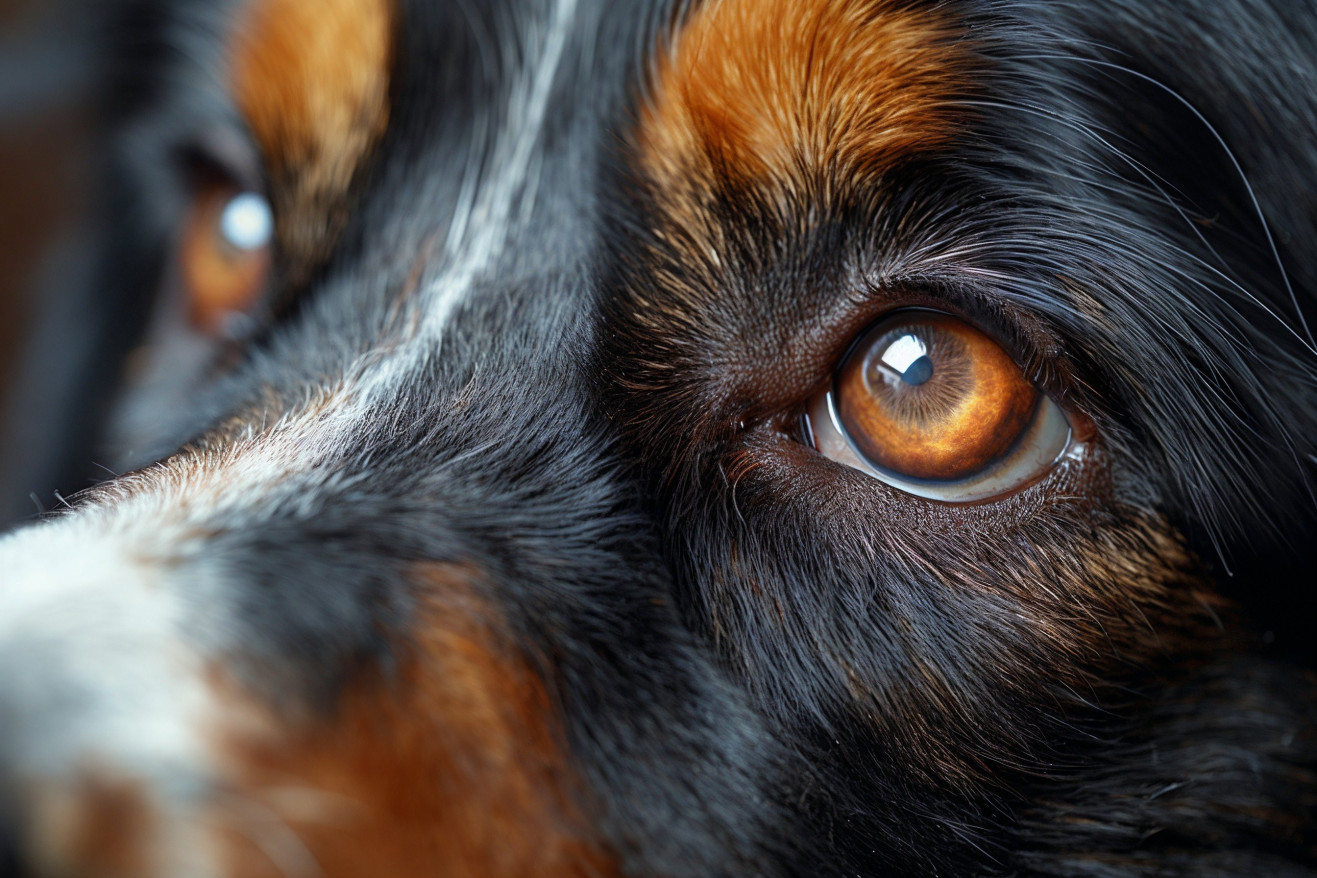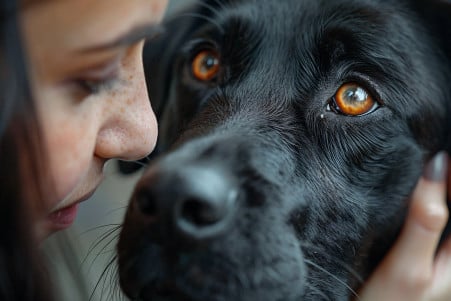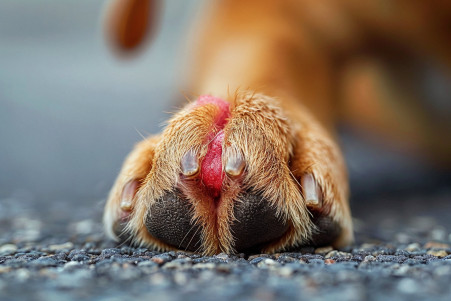How to Treat Lumps on a Dog's Eyelid: A Vet's Guide
16 May 2024 • Updated 15 May 2024

If you've noticed a lump on your dog's eyelid, you're probably worried about whether or not it's serious and how you can make it go away. While most lumps are just styes or cysts, they can cause problems if your dog keeps scratching or rubbing at them. Luckily, most lumps can be treated at home with warm compresses and gentle cleaning and will go away in a week or two. However, if the lump doesn't go away or changes in any way, you should take your dog to the vet.
In this article, we'll go over the different types of lumps that can appear on a dog's eyelid, as well as home remedies, vet treatments, and ways to prevent future lumps. All of this information is based on advice from vets and research from animal health experts. By catching the signs early and following the advice of the professionals, you can make sure your dog's eyes stay healthy and comfortable.
How can I treat a bump on my dog's eyelid?
Kinds of Dog Eyelid Tumors
The most common types of dog eyelid tumors are meibomian gland adenomas, melanomas, papillomas, and squamous cell carcinomas. Although approximately 75% of eyelid tumors are non-cancerous, some are cancerous and will need to be treated more aggressively.
Meibomian gland adenomas are pink, lobulated masses that grow from the edge of the eyelid. Melanomas can be pigmented nodular masses or flat, pigmented plaques. Papillomas are often viral and have a rough, cobblestone-like appearance. Squamous cell carcinomas are a type of skin cancer that can occur on the eyelids.
Signs of eyelid tumors include squinting, excessive tearing, inability to fully close the eye, and eye discharge or bleeding from the mass, notes Dr. Julie Buzby. While some tumors like papillomas may go away on their own in young dogs, most will need to be treated by a vet.
A vet will need to examine the growth and may need to perform a biopsy to determine the specific type of eyelid tumor, since some can be locally invasive or a sign of a more serious condition. It’s important to get medical attention as soon as possible since if left untreated, tumors can lead to vision problems, discomfort, and, if cancerous, potential metastasis.
Veterinary Treatment Options for Eyelid Growths
Surgical removal is often recommended for larger or more persistent eyelid growths, especially if they are causing discomfort or affecting the dog's ability to see, according to the PDSA. The specific surgical approach, which may include cryosurgery (freezing), debulking, or excision, will depend on the type and location of the growth. The mass will be biopsied after it is removed to confirm the diagnosis and determine if further treatment is necessary.
Non-surgical options like topical medications or cryotherapy may be suggested for smaller or benign growths in some cases, according to Vetster. The standard recovery process will involve wound care and the dog wearing a buster collar, as well as any prescribed medications. The cost of the surgery can range but is generally in the low hundreds of dollars, according to the PDSA.
Although surgical intervention is typically successful for benign masses, with a recurrence rate of just 10%, Vetster explains that more extensive surgery may be necessary for larger or malignant growths. Accurate diagnosis and treatment are essential to effectively address eyelid growths and protect your dog's eye health.
Home Remedies and Natural Treatments
If your dog has a small eyelid bump, you can use warm compresses and clean the area with a saline solution or warm water as a first-line home treatment, says Dogs Naturally Magazine. Some natural treatments that can help reduce swelling and support healing include castor oil, vitamin E, green tea, turmeric, and apple cider vinegar, according to Veterinary Secrets with Dr. Andrew Jones, DVM.
There are also some herbs and homeopathic treatments that can help with eye issues, including astaxanthin, marigold, eyebright, and Euphrasia Officinalis 30C, notes Dogs Naturally Magazine. However, even though these natural treatments can help with minor issues, you should still have any growths that don’t go away or that get bigger checked out by a vet. Never try to treat a potentially cancerous or serious eyelid growth with home remedies.
When to See a Vet
According to The Village Vets 24-Hour Emergency, if the stye or growth on your dog's eyelid doesn't go away after a week or two, it's time to see a vet. Other reasons to seek immediate veterinary care include if the growth is swollen, red, has pus or discharge, is bleeding, or if your dog is in pain.
As Dogster points out, eye infections can be painful and even lead to vision loss if they're not treated. Plus, while most growths on a dog's eyelid are benign, if they're cancerous, they need to be removed before the cancer spreads, according to Vetster.
If your dog's growth is causing them pain or discomfort, don't try to treat it at home. Instead, take them to the vet so they can get the proper care they need. This way, you can ensure that your dog's eye issue is diagnosed and treated correctly, and that their eye health is maintained.
Preventative Measures and Eye Health Tips
Keeping your dog's eyes healthy is important, and it all starts with regular vet visits. NVISION Eye Centers explains that regular eye exams can help catch potential problems early, even genetic issues that could make your dog more prone to eye conditions.
In addition to regular vet visits, it's also important to keep your dog well-groomed. Animal Wellness Magazine explains that this includes keeping the area around the eyes free of dirt and other irritants and making sure to trim any hair that could brush against the eyes. For dogs with eye conditions or that are prone to eye injuries, protective eyewear like Doggles can help prevent further issues, according to the MSPCA-Angell.
In addition to these measures, a diet that's high in protein and includes antioxidants like blueberries, fish oil, and CBD oil can help support your dog's eye health, says PetLeaf. Regular at-home eye exams that include checking for changes in the size of the pupils, the brightness of the eyes, and any vision changes, and taking your dog to the vet if you notice any changes, can also help catch issues early.
With a combination of preventative measures and keeping a close eye on your dog's eye health, you can help make sure your dog keeps their vision and doesn't develop any serious issues.
Conclusion: How to Keep Your Dog's Eyes Healthy
In conclusion, this article on eyelid bumps in dogs highlights the importance of understanding and addressing these conditions. The most common types of eyelid growths, which are meibomian gland adenomas, melanomas, papillomas, and squamous cell carcinomas, need to be diagnosed and treated by a veterinarian as soon as possible.
Although there are home and natural remedies that can help with minor eyelid bumps, it's important to get professional help if the bump doesn't go away or gets worse. In addition, there are things you can do to help prevent eyelid bumps, such as taking your dog to the vet regularly, keeping their eyes clean, and feeding them a healthy diet.
The bottom line is that dog owners should be vigilant about their dog's eye health and seek help from a vet if they notice anything unusual. With a little bit of care and attention, dog owners can help their pets avoid eye problems and keep them comfortable.


